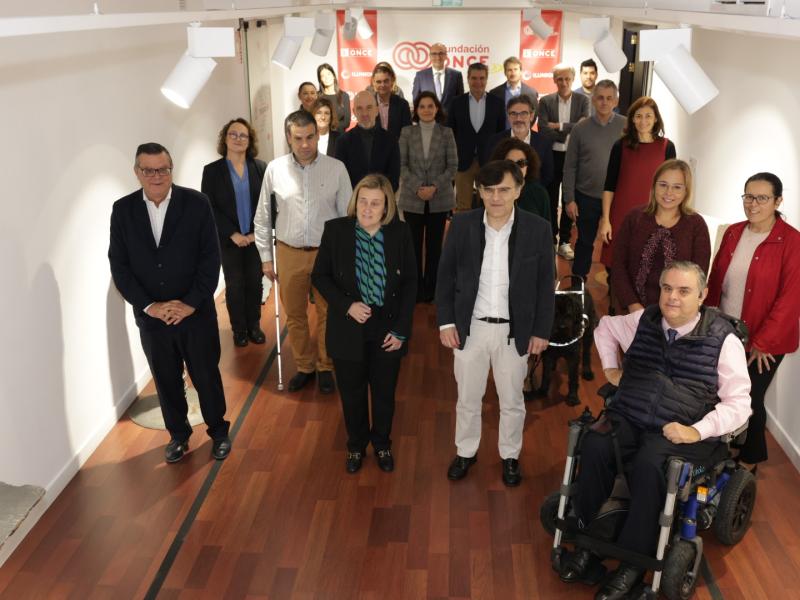
At the meeting held this Friday at the ONCE Foundation headquarters
The jury of the VII edition of the Discapnet Awards for Accessible Technologies of the ONCE Foundation has selected 12 finalists from all the candidates presented among the four categories of this call.
These awards recognize the best initiatives and actions in the field of technologies applied to improving the quality of life of people with disabilities, as well as companies, entities or organizations that have developed continuous work in the field of accessibility. technological.
As in the previous edition, the awards are structured into four sections: award for the best product or service; person, entity or organization; entrepreneurship project with social impact, and media.
Category A rewards the best product or service based on technologies to improve the quality of life of people with disabilities that is already available on the market. In this edition the jury has selected as finalists:
- 1. Digital health for all, an accessible telemedicine platform that facilitates correct online care for people with disabilities developed by EVER HEALTH.
- 2. INDIe4All, an authoring tool that facilitates the creation of accessible digital resources for learning and which has been launched by the Polytechnic University of Cartagena (UPCT).
- 3. Laundry ID, a system aimed at facilitating the industrial process of washing clothes for people with disabilities, promoted by the Institute of Robotics for Dependency.
In section B, the award goes to the person, company, entity or organization that has stood out the most for its continued trajectory in terms of improving accessibility to technology. Competing for this award:
- 1. The Spanish Center for Subtitling and Audio Description (CESyA), which has extensive experience in research and application of accessibility features on audiovisual content.
- 2. Technological innovation at the service of social inclusion, from the Association of Technology and Neuroscience, NEUROLAB, for its trajectory characterized by promoting rehabilitation through ICT.
- 3. SmartUMU for everyone, from the University of Murcia, a work in which several technological developments have been made to enhance educational inclusion at the university.
Category C recognizes the best entrepreneurship project with social impact to improve the quality of life of people with disabilities through ICT. This time the finalists are:
- 1. SuperGiz Project, from the Association of Auto Manufacturers. It is a prosthesis system for upper limbs that does not imitate the morphology of a hand and is characterized by being customizable, “light, practical and affordable.” Manufactured using 3D printing, clinical studies are being carried out so that it can be part of the Social Security product catalogue.
- 2. Easier Health, from Sandoz Iberia and Plena Inclusion Madrid. This is an adaptation of drug leaflets for easy reading and making them available on the website.
- 3. Lucca - Your accessible home, from Lucca. Mobile application that helps manage home automation and energy efficiency.
Finally, section D will award the media “that has stood out the most for disseminating initiatives, projects, products and services related to accessible technologies to society.” They will dispute it:
- 1. Usable and Accessible, a blog by Olga Carreras, an ICT accessibility expert “with wide recognition in the sector.” Makes a great dissemination of technological accessibility: legislation, standards, evaluation techniques, etc.
- 2. Expansion Newspaper. “It stands out for the volume of topics introduced on accessibility and the depth with which they are addressed.”
- 3. For three reasons, from Radio Nacional de España, a program in which issues related to disabilities are addressed “in a very natural way, highlighting the protagonists of the stories they transmit.”
AWARDS
As in previous editions, the prize money will be economical in all categories: the winners in sections A, B and D will receive 5,000 euros, while the work awarded in section C will have 15,000 euros. In the latter case, the money must be allocated entirely to the development of the distinguished project.